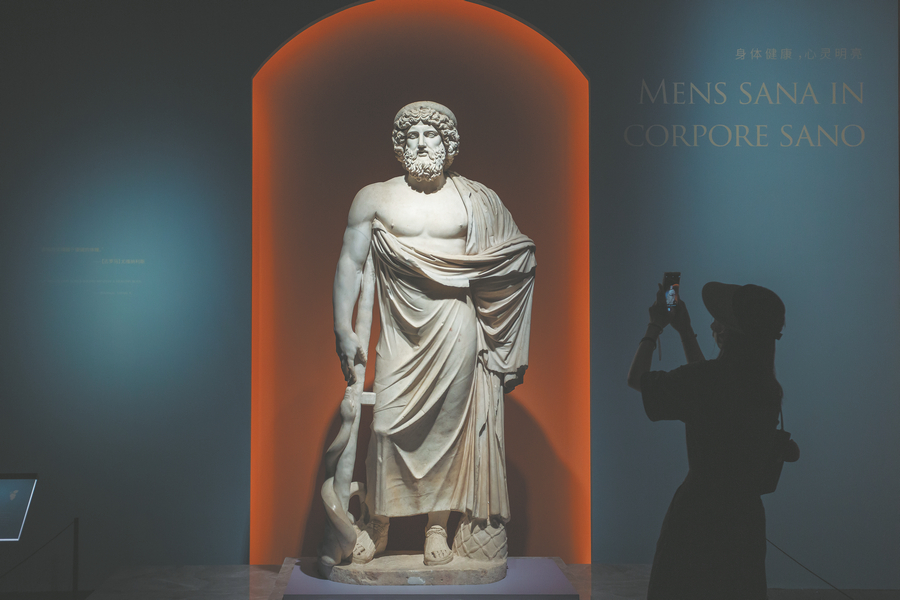Decoding serpentine paradox
With the Year of the Snake on the horizon, Zhao Xu takes a look at the enigmatic creature in myriad cultures.


Imagine a snake — coiled, elusive, and steeped in meaning — emerging from the depth of the world's cultural history to leave its mark on human imagination. Perhaps it's the rearing cobra, poised on the golden mask of the Egyptian king Tutankhamun, a symbol of protection and divine authority. Or it might be the head of Medusa, the Gorgon whose hair of writhing snakes and petrifying gaze have haunted myth and art alike.
For the more artistically inclined, there's the celebrated Hellenistic sculpture Laocoon and His Sons, capturing the agonizing moment when the Trojan priest and his sons are ensnared by sea serpents. Then, of course, there's the serpent in the Garden of Eden, an enduring symbol of temptation and the central figure in the Christian tale of original sin.
In the Chinese zodiac, 2025 kicks off as the Year of the Snake on Jan 29. But looking at the bigger picture, snakes seem to slither just as prominently — if not more so — through the myths and symbols of other cultures, too. What stands out most about this enigmatic creature is its complexity — or, more precisely, its duality.
Ask the ancient Egyptians, and they'd tell you about Wadjet, the protective goddess of Lower Egypt and guardian of pharaohs, often depicted as a rearing cobra known as the uraeus. After the unification of Upper and Lower Egypt by King Narmer around 3100 BC, the cobra of Wadjet appeared alongside the vulture of Nekhbet, the goddess of Upper Egypt, on the pharaoh's crown, symbolizing the unity of the two lands.
Another equally prominent snake deity is Renenutet, the goddess of nourishment and harvest depicted as a woman with the head of a cobra who would watch over granaries. Central to Egyptian royal iconography, the snake — crawling close to the earth — was also celebrated for its connection to the soil, symbolizing fertility. The same attribute also linked the snake to the underground realm. Appearing in the tombs of pharaohs, they are expected to safeguard the king's journey to the afterlife.
Yet, it is in the ancient Egyptian portrayal of the snake as a force of chaos and destruction that one can find some of the most profound philosophical wisdom of the civilization. Apep, a massive serpent, was the archenemy of the sun god Ra. Each night, Apep attempted to devour Ra's solar disk as it journeyed through the underworld. Though Apep was defeated every night, he could never be permanently destroyed. The nightly battle epitomized the Egyptian view of the perpetual struggle between order and chaos, and the constant need to maintain balance in the universe.
























